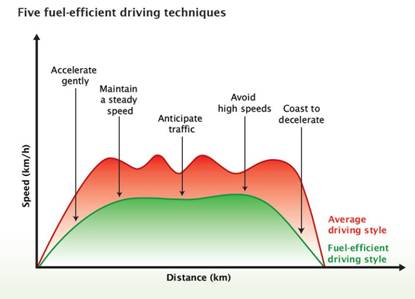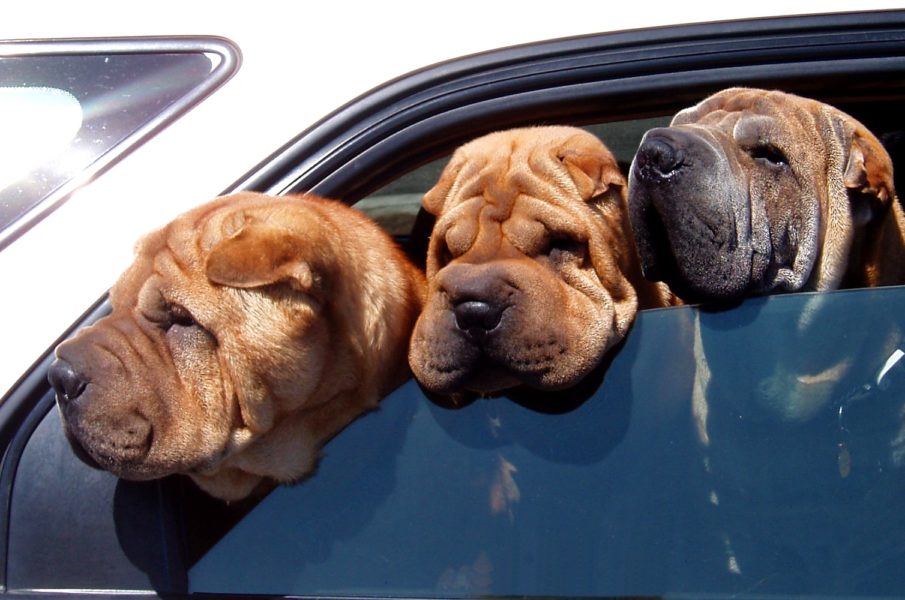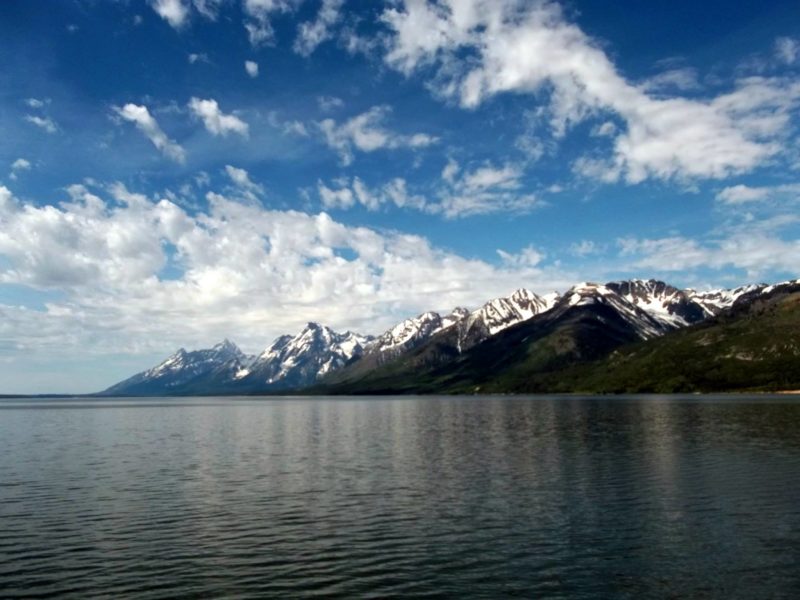With the end of the school year upon us, no doubt many of you are embarking on one of my favorite activities: the road trip. Even with gas prices under $3 per gallon, the prospect of shelling out well over $100 in fuel will have anyone trying to use a few gallons less. Here at UCS, we are always thinking about ways to save fuel. Having driven cross-country a number of times—and worked as a physicist and vehicles analyst—here are a few tips I use to save fuel:
#1—Use the right car for the trip
Last year, I had an amazing time traveling around Montana and the vicinity, and I splurged on a one-way car rental to maximize the sightseeing. The rental car company first offered me an “upgrade” to a minivan, presumably because more space is supposed to be a good thing; however, if I hadn’t fought them for the economy car I had reserved, it would have cost me another $100 in fuel for the trip, money I would much rather spend on huckleberry ice cream and a national park pass. You might always default to the big SUV for your family, but if you can fit everything in a sedan, you’re better off. The lesson: use the most fuel-efficient car that will fit your stuff.
#2—Slow down
One of my favorite aspects of a road trip is taking in new scenery. When you’re flying down the road at 80 miles per hour, not only are you probably missing out on some surprising views—you’re also wasting fuel. Your car is optimized for somewhere around 55-60 miles per hour, and you can reduce efficiency by almost a third if you’re going 20 mph over. At today’s prices, driving 80 mph when the speed limit is 65 mph not only runs the risk of getting pulled over—it’s like raising the price of gas by almost $1 per gallon! Slow down and enjoy the trip.
#3—Turn off cruise control (on hills, at least)
On a long drive, you might be tempted to use the cruise control—but if you are driving through the rolling countryside, don’t. Not only does it allow you to pay less attention to driving, which is suboptimal for safety, the cruise control on most cars is a surefire way to waste fuel on anything but the flattest terrain because it tries to maintain a steady speed as tightly as possible. Instead, as a smart and attentive driver, you can maintain speed in a more efficient way.

There are lots of simple driving tips out there, but looking ahead and coasting appropriately is a surefire way of saving fuel. (Image courtesy of Natural Resources Canada)
Hypermilers have lots of driving tips, not all of which I’d recommend, but the most obvious one is to learn to coast instead of brake. For example, traveling downhill, your car will naturally tend to speed up—let it! Nature is giving you additional momentum for free, and the uphill that follows will require more power, so you should use that free speed to help you up the forthcoming uphill. Similarly, if you see red lights up ahead, let go of the throttle instead of braking, letting nature (through friction and drag) slow you down instead of wasting energy by braking until you are at an appropriate pace for traffic.
On flat terrain, cruise control helps correct the widespread bad driving behavior of letting your speed drift, so for many it is an easy way to save fuel. But there are more efficient ways of driving—for example, maintaining pedal position is much better than maintaining speed when it comes to fuel use (though obviously you should match it to road conditions and traffic for safety). You can be a better driver than your car’s cruise control; learn eco-driving techniques that work for you to save fuel.
[For you bikers, a good way of thinking about smart driving is to drive like you bike.]
#4—Lose weight
Contrary to what you think, this doesn’t mean you need to cut back on dessert—weight reduction is a strategy many manufacturers are using right now to improve the fuel economy of new vehicles. The same basic concept applies to any vehicle. Weight = energy, so leave the excess baggage at home. From bats and balls for your son’s or daughter’s little league practice—or maybe a screaming child (just kidding, don’t do that)—shed any unnecessary weight to save fuel.
#5—Keep those tires filled properly
Proper maintenance of your vehicle is critical. While some newer models make monitoring tires pretty idiot-proof by providing pressure monitors and even honking at you to prevent overinflation, take the time to make sure your tires are inflated properly before the trip. You can typically find the manufacturer-recommended tire pressure on a label inside the driver’s side door. Not only can under- or over-inflating your tires reduce their lifetime, costing you more frequent trips to find replacement tires, it can cost you up to 1 percent of your fuel economy. Maintaining the correct tire pressure is safer, and it also saves fuel.
#6—Roll down the windows
Cooped up in the car all day, it’s important to be comfortable. Many folks default to using the A/C as soon as it gets hot out. Others are like me and love to drive with the windows down as much as possible. Is one better than the other?

See, everyone loves driving with the windows down! And while sticking your head out the window like these fellas might not be the most aerodynamic, the air flow of an open window can help keep you cool and save fuel. (Image courtesy of emdot)
This has been a long-standing debate, and the truth is that it depends on enough different factors (e.g., engine size, aerodynamic coefficients, ambient temperature) that it’s tough to be too precise. However, generally it’s been shown that at any speed it’s better to drive with the windows down than the A/C on. While an SAE study from ten years ago showed that driving with the windows down significantly reduces fuel economy, and aerodynamic tests showed that one would expect the A/C to be more efficient at high speeds, actual on-road testing instead revealed that fuel consumption was greater with the air-conditioning on at all tested speeds. Road testing by Edmunds was inconclusive, but Car and Driver found that at all speeds up to 75 mph that having the A/C on used more fuel than open windows. Even at highway speeds, it is generally more efficient to keep cool with the windows down.
#7—Don’t be idle
It’s a common practice to turn on the car on a very hot or very cold day to get the climate control system ready, either the A/C compressor cranking out ultra-cold air or getting the engine block nice and warm to crank the heat. In both cases, this is just wasting fuel, as this Department of Energy fact sheet nicely discusses. And if you’re waiting for someone dillydallying to come back to the car after a road stop, wait to turn on the car—idling wastes fuel. If you’re sitting somewhere (e.g., a drive-thru) for more than 30 seconds, turn off your car. Don’t let the engine run unless you’re ready to go.

Slow down and enjoy yourself, or you might miss some gorgeous scenery like this stunning view of Jackson Lake, Wyoming. And if you’re going to stop by the side of the road for a photo like I did, turn your engine off to save fuel.
#8—Have fun
Road trips are a blast—enjoying some new sights with people you care about can be a great, relatively cheap vacation. And you know what? Having fun can actually save fuel, too—a relaxed driver is less likely to aggressively (and unnecessarily) brake or accelerate quickly, wasting precious fuel. Enjoy yourself this summer, and save fuel!
